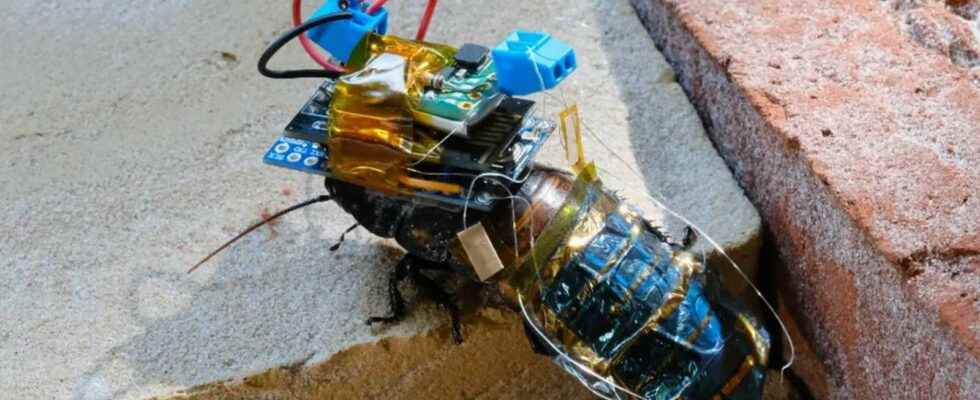By installing a solar-powered device on its back, researchers have succeeded in transforming a cockroach into a remote-controlled cyborg. These insects could one day be used in search and rescue operations, or to monitor the environment.
You will also be interested
[EN VIDÉO] Pilot a drone using your brain with Brainflight! Controlling a drone with your mind and from a distance is what the European Brainflight project, from the Tekever company, offers thanks to a brain-computer interface. Euronews and Futuris tell us more on video during this report.
After the dragonfly and the Bumblebee transformed into drone, here is the scariest version of the cyborg insect: the remote-controlled cockroach. Specifically, it is a Madagascar cockroach. In an article published in the journal npj Flexible Electronicsa team of researchers details the method to take control of this insect thanks to a “bag to back » solar.
The device is composed of a small support printed in 3D and glued to the thorax cockroach. This holds the electronics, including an nRF24L01 wireless module and a 40mAh lithium-polymer battery, both connected to an Arduino Pro mini board. The battery is recharged using an ultra-thin organic solar cell of only 4 micrometers thick that produces 17.2 milliwatts of electrical power, glued to theabdomen cockroach.
Cyborg cockroaches controlled via Bluetooth
The solar cell is divided into strips, which allows it to deform and not interfere with the movements cockroach. Thanks to the small wireless module, they were able to control the insect via Bluetooth, without inserting electrodes in the body of the insect. They used stimulation electric directly on the cerques, appendages at end of abdomen. Apply a Electric power on the left one, and the cockroach turns left, and vice versa.
This solution has proven to be particularly durable, since the device can stay stuck for an entire month. Once charged, battery works for about two hours. These are the communications that consume the most, and therefore the autonomy could be extended by optimizing them. Cockroaches being nocturnal and photophobic, the researchers also suggested adding temperature sensors and photodiodes. Thanks to an algorithm, the system could force the insect to stay under the light to charge the battery.
Interested in what you just read?
